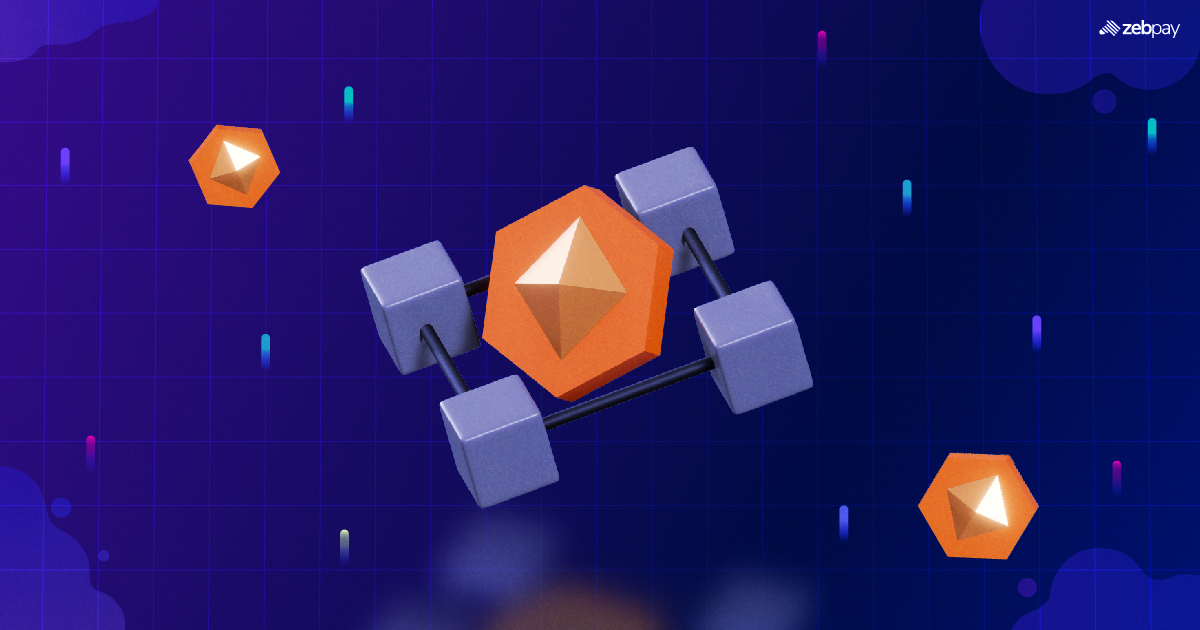The early years of the crypto market were a fantastic introduction to the innovation blockchains would bring to the table. They enabled financial transactions to be decentralised, secure and anonymous. But a major problem was that each project functioned in a silo – separated from all other blockchains. Multichain technology is here to change that.
Defining Multichain: What It Is and How It Works
Multichain is a blockchain platform that supports independent chains in the same network. In a multichain system, each chain can have its own set of rules, permissions, and assets. However, they are interconnected and able to interact with each other. In the multichain system, all the individual chains can connect on a peer-to-peer basis, using blockchain nodes. Data can be transferred between chains, allowing for seamless integration and interoperability. The platform is geared towards creating customizable enterprise blockchains.
The Emergence of Multichain Technology and Its Importance
Multichain technology is designed to provide greater flexibility and scalability to blockchain networks. This enables developers to create more specialised and customizable applications. For example, a multichain system could be used to create a private blockchain network for a group of companies. Each company can have its own chain with unique rules and permissions, but they can all share data and assets as needed.
Benefits of Multichain in the Blockchain Ecosystem
Multichain technology offers several benefits in the blockchain ecosystem:
- Customization: Multichain allows for the customization of blockchain networks for specific use cases. This enables developers to create specialized chains with unique rules, permissions, and assets.
- Scalability: With multiple chains, the overall network can handle a greater volume of transactions.
- Interoperability: Different chains within a multichain system can interact and exchange data and assets, providing greater flexibility and interoperability.
- Cost-effectiveness: Multichain reduces the cost of blockchain development and deployment. It allows for multiple applications to share a single network infrastructure.
- Faster transactions: With multiple chains running in parallel, transactions can be processed faster.
Read more: Multichain vs Cross-Chain
Interoperability in Multichain: A Deep Dive
Understanding Interoperability and Its Importance in Multichain
Interoperability is the ability of different blockchain networks to communicate with each other. Interoperability is critical because it allows for data sharing between different chains. These may be within the same network, as well as between different networks. Interoperability thus provides a blockchain network with enhanced functionality, increased efficiency and expanded reach.
Interoperability Solutions in Multichain
Multichain uses a process known as “handshaking” to establish interoperability. Each node in the network is represented by an address and a set of procedures. Nodes then send messages to other users and nodes. If they do not receive the correct response in return, the connection is closed. Successful handshaking is used to build a whole network of interconnected blockchains for enterprise use.
Technical Challenges in Achieving Cross-Chain Interoperability
There are some major challenges to overcome to achieve interoperability across chains. Firstly, there are several difficulties in validating transactions. This can occur due to different consensus mechanisms or scaling solutions – like sharding or state channels. Additionally, other networks may use different programming languages, data structures and architectures. All these factors make it harder to implement interoperability.
Multichain Architecture: Components and Layers
Components of Multichain Architecture
The Multichain platform provides a simple API and command-line interface for transactions. It is also equipped with a suite of business solutions. These include permissions management, per-chain customization and native assets.
Layers of Multichain Architecture
The base layer of the multichain architecture is the backend and database layer. The backend handles the foundations and security of the network, while the database maintains a record of permissions and transactions. Next, the blockchain nodes allow for connections between the various multichain blockchains. This establishes peer-to-peer connectivity and enables the transfer of data between nodes. Finally, the front end provides a simple and easy-to-use interface for financial applications.
Read more: What Are Blockchain Layers
Comparison of Multichain Architecture with Traditional Blockchain Architecture
Here are some key differences between Multichain and traditional blockchains:
- Scalability: Traditional blockchain architectures rely on a single blockchain that stores all transaction data. Meanwhile, Multichain technology uses many blockchains that can be tailored to specific use cases or applications.
- Customization: Multichain technology allows for developer customization. Individual blockchains can be configured to meet specific business requirements or use cases. Standard platforms require developers to meet their specifications.
- Interoperability: Multichain technology enables different blockchains to communicate and exchange data with each other. Traditional blockchain architectures typically operate in isolation from each other.
- Privacy: Multichain technology allows for greater privacy and confidentiality than traditional blockchain architectures. It enables the creation of private blockchains that restrict access to sensitive data.
Multichain Implementation: Use Cases and Examples

Use Cases of Multichain in Various Industries
Multichain technology provides some key benefits, like customization, scalability and privacy. It is thus applicable in almost all industries that require the sharing of sensitive data, scalable transactions and interoperability. Some examples include supply chain management, financial services and legal services.
Examples of Successful Implementations of Multichain Technology
Multichain has been adopted by dozens of organizations, such as SAP, Wolfram Research and Chainstack. SAP uses the service to help build new blockchain-based networks and provide easy access to blockchain technology for its clients. Meanwhile, Wolfram has integrated multichain in its language model. This allows users to write blockchain-based applications.
Future Potential of Multichain in the Decentralized Economy
As mentioned above, multichain is a highly scalable and adaptable technology. It can thus be applied across most industries. As the demand for blockchain-based solutions increases, so will the number of businesses that adopt multichain technology.
How to Mine Using Multichain?
Explanation of the Mining Process for Multichain
Mining in a multichain network is done using a distributed consensus algorithm. The miners are chosen based on a pre-determined set of entities. Additionally, a “mining diversity” measure is included, which takes a value between 0 and 1. To ensure a block is effective, the mechanism applies the permissions made by transactions. It then finds the number of approved miners and rounds them up using the mining diversity measure.
Discussion of the Hardware and Software Requirements for Mining Multichain
The minimum requirements for running Multichain protocol include 1 GB of disk space and 512 megabytes of RAM. However, to achieve speeds close to 800 transactions per second, you need to use a CPU with at least 8 cores and 32 GB RAM.
Read more: How To Build A Crypto Mining Rig
Conclusion
Recap of What Multichain Is And Its Importance in Blockchain Technology
Multichain technology is a blockchain platform that enables businesses to launch custom blockchains. They are interoperable and private, which means different chains can communicate with each other. This platform has several benefits, such as easy sharing of data, higher security and faster transactions.
Key Takeaways and Next Steps for Incorporating Multichain Into Business Processes
Multichain is a generalizable technology which can be used in various industries. As the need for fast transactions and sharing of sensitive data increases, so will the demand for multichain technology. If you want a seamless blockchain experience for your business needs, Multichain may be the right solution for you.
You can learn more about crypto trading and investing on ZebPay blogs. Trade confidently with ZebPay.

